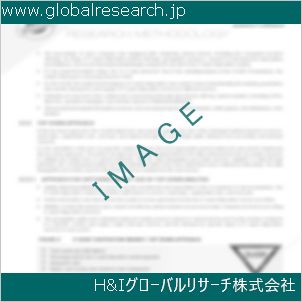1 Optical Transparent Ceramics Market Overview
1.1 Product Definition
1.2 Optical Transparent Ceramics Segment by Type
1.2.1 Global Optical Transparent Ceramics Market Value Growth Rate Analysis by Type 2022 VS 2029
1.2.2 ALON Transparent Ceramics
1.2.3 Sapphire Transparent Ceramics
1.2.4 Yttria Transparent Ceramics
1.2.5 Spinel Transparent Ceramics
1.2.6 YAG Transparent Ceramics
1.3 Optical Transparent Ceramics Segment by Application
1.3.1 Global Optical Transparent Ceramics Market Value Growth Rate Analysis by Application: 2022 VS 2029
1.3.2 Transparent Armor
1.3.3 Domes and Windows
1.3.4 Sensors & Instrumentation
1.3.5 Other (Lighting,Lens,etc)
1.4 Global Market Growth Prospects
1.4.1 Global Optical Transparent Ceramics Production Value Estimates and Forecasts (2018-2029)
1.4.2 Global Optical Transparent Ceramics Production Capacity Estimates and Forecasts (2018-2029)
1.4.3 Global Optical Transparent Ceramics Production Estimates and Forecasts (2018-2029)
1.4.4 Global Optical Transparent Ceramics Market Average Price Estimates and Forecasts (2018-2029)
1.5 Assumptions and Limitations
2 Market Competition by Manufacturers
2.1 Global Optical Transparent Ceramics Production Market Share by Manufacturers (2018-2023)
2.2 Global Optical Transparent Ceramics Production Value Market Share by Manufacturers (2018-2023)
2.3 Global Key Players of Optical Transparent Ceramics, Industry Ranking, 2021 VS 2022 VS 2023
2.4 Global Optical Transparent Ceramics Market Share by Company Type (Tier 1, Tier 2 and Tier 3)
2.5 Global Optical Transparent Ceramics Average Price by Manufacturers (2018-2023)
2.6 Global Key Manufacturers of Optical Transparent Ceramics, Manufacturing Base Distribution and Headquarters
2.7 Global Key Manufacturers of Optical Transparent Ceramics, Product Offered and Application
2.8 Global Key Manufacturers of Optical Transparent Ceramics, Date of Enter into This Industry
2.9 Optical Transparent Ceramics Market Competitive Situation and Trends
2.9.1 Optical Transparent Ceramics Market Concentration Rate
2.9.2 Global 5 and 10 Largest Optical Transparent Ceramics Players Market Share by Revenue
2.10 Mergers & Acquisitions, Expansion
3 Optical Transparent Ceramics Production by Region
3.1 Global Optical Transparent Ceramics Production Value Estimates and Forecasts by Region: 2018 VS 2022 VS 2029
3.2 Global Optical Transparent Ceramics Production Value by Region (2018-2029)
3.2.1 Global Optical Transparent Ceramics Production Value Market Share by Region (2018-2023)
3.2.2 Global Forecasted Production Value of Optical Transparent Ceramics by Region (2024-2029)
3.3 Global Optical Transparent Ceramics Production Estimates and Forecasts by Region: 2018 VS 2022 VS 2029
3.4 Global Optical Transparent Ceramics Production by Region (2018-2029)
3.4.1 Global Optical Transparent Ceramics Production Market Share by Region (2018-2023)
3.4.2 Global Forecasted Production of Optical Transparent Ceramics by Region (2024-2029)
3.5 Global Optical Transparent Ceramics Market Price Analysis by Region (2018-2023)
3.6 Global Optical Transparent Ceramics Production and Value, Year-over-Year Growth
3.6.1 North America Optical Transparent Ceramics Production Value Estimates and Forecasts (2018-2029)
3.6.2 Europe Optical Transparent Ceramics Production Value Estimates and Forecasts (2018-2029)
3.6.3 China Optical Transparent Ceramics Production Value Estimates and Forecasts (2018-2029)
3.6.4 Japan Optical Transparent Ceramics Production Value Estimates and Forecasts (2018-2029)
4 Optical Transparent Ceramics Consumption by Region
4.1 Global Optical Transparent Ceramics Consumption Estimates and Forecasts by Region: 2018 VS 2022 VS 2029
4.2 Global Optical Transparent Ceramics Consumption by Region (2018-2029)
4.2.1 Global Optical Transparent Ceramics Consumption by Region (2018-2023)
4.2.2 Global Optical Transparent Ceramics Forecasted Consumption by Region (2024-2029)
4.3 North America
4.3.1 North America Optical Transparent Ceramics Consumption Growth Rate by Country: 2018 VS 2022 VS 2029
4.3.2 North America Optical Transparent Ceramics Consumption by Country (2018-2029)
4.3.3 United States
4.3.4 Canada
4.4 Europe
4.4.1 Europe Optical Transparent Ceramics Consumption Growth Rate by Country: 2018 VS 2022 VS 2029
4.4.2 Europe Optical Transparent Ceramics Consumption by Country (2018-2029)
4.4.3 Germany
4.4.4 France
4.4.5 U.K.
4.4.6 Italy
4.4.7 Russia
4.5 Asia Pacific
4.5.1 Asia Pacific Optical Transparent Ceramics Consumption Growth Rate by Region: 2018 VS 2022 VS 2029
4.5.2 Asia Pacific Optical Transparent Ceramics Consumption by Region (2018-2029)
4.5.3 China
4.5.4 Japan
4.5.5 South Korea
4.5.6 China Taiwan
4.5.7 Southeast Asia
4.5.8 India
4.6 Latin America, Middle East & Africa
4.6.1 Latin America, Middle East & Africa Optical Transparent Ceramics Consumption Growth Rate by Country: 2018 VS 2022 VS 2029
4.6.2 Latin America, Middle East & Africa Optical Transparent Ceramics Consumption by Country (2018-2029)
4.6.3 Mexico
4.6.4 Brazil
4.6.5 Turkey
5 Segment by Type
5.1 Global Optical Transparent Ceramics Production by Type (2018-2029)
5.1.1 Global Optical Transparent Ceramics Production by Type (2018-2023)
5.1.2 Global Optical Transparent Ceramics Production by Type (2024-2029)
5.1.3 Global Optical Transparent Ceramics Production Market Share by Type (2018-2029)
5.2 Global Optical Transparent Ceramics Production Value by Type (2018-2029)
5.2.1 Global Optical Transparent Ceramics Production Value by Type (2018-2023)
5.2.2 Global Optical Transparent Ceramics Production Value by Type (2024-2029)
5.2.3 Global Optical Transparent Ceramics Production Value Market Share by Type (2018-2029)
5.3 Global Optical Transparent Ceramics Price by Type (2018-2029)
6 Segment by Application
6.1 Global Optical Transparent Ceramics Production by Application (2018-2029)
6.1.1 Global Optical Transparent Ceramics Production by Application (2018-2023)
6.1.2 Global Optical Transparent Ceramics Production by Application (2024-2029)
6.1.3 Global Optical Transparent Ceramics Production Market Share by Application (2018-2029)
6.2 Global Optical Transparent Ceramics Production Value by Application (2018-2029)
6.2.1 Global Optical Transparent Ceramics Production Value by Application (2018-2023)
6.2.2 Global Optical Transparent Ceramics Production Value by Application (2024-2029)
6.2.3 Global Optical Transparent Ceramics Production Value Market Share by Application (2018-2029)
6.3 Global Optical Transparent Ceramics Price by Application (2018-2029)
7 Key Companies Profiled
7.1 CoorsTek
7.1.1 CoorsTek Optical Transparent Ceramics Corporation Information
7.1.2 CoorsTek Optical Transparent Ceramics Product Portfolio
7.1.3 CoorsTek Optical Transparent Ceramics Production, Value, Price and Gross Margin (2018-2023)
7.1.4 CoorsTek Main Business and Markets Served
7.1.5 CoorsTek Recent Developments/Updates
7.2 CeramTec ETEC
7.2.1 CeramTec ETEC Optical Transparent Ceramics Corporation Information
7.2.2 CeramTec ETEC Optical Transparent Ceramics Product Portfolio
7.2.3 CeramTec ETEC Optical Transparent Ceramics Production, Value, Price and Gross Margin (2018-2023)
7.2.4 CeramTec ETEC Main Business and Markets Served
7.2.5 CeramTec ETEC Recent Developments/Updates
7.3 Surmet Corporation
7.3.1 Surmet Corporation Optical Transparent Ceramics Corporation Information
7.3.2 Surmet Corporation Optical Transparent Ceramics Product Portfolio
7.3.3 Surmet Corporation Optical Transparent Ceramics Production, Value, Price and Gross Margin (2018-2023)
7.3.4 Surmet Corporation Main Business and Markets Served
7.3.5 Surmet Corporation Recent Developments/Updates
7.4 II-VI Incorporated
7.4.1 II-VI Incorporated Optical Transparent Ceramics Corporation Information
7.4.2 II-VI Incorporated Optical Transparent Ceramics Product Portfolio
7.4.3 II-VI Incorporated Optical Transparent Ceramics Production, Value, Price and Gross Margin (2018-2023)
7.4.4 II-VI Incorporated Main Business and Markets Served
7.4.5 II-VI Incorporated Recent Developments/Updates
7.5 CeraNova
7.5.1 CeraNova Optical Transparent Ceramics Corporation Information
7.5.2 CeraNova Optical Transparent Ceramics Product Portfolio
7.5.3 CeraNova Optical Transparent Ceramics Production, Value, Price and Gross Margin (2018-2023)
7.5.4 CeraNova Main Business and Markets Served
7.5.5 CeraNova Recent Developments/Updates
7.6 Konoshima Chemicals
7.6.1 Konoshima Chemicals Optical Transparent Ceramics Corporation Information
7.6.2 Konoshima Chemicals Optical Transparent Ceramics Product Portfolio
7.6.3 Konoshima Chemicals Optical Transparent Ceramics Production, Value, Price and Gross Margin (2018-2023)
7.6.4 Konoshima Chemicals Main Business and Markets Served
7.6.5 Konoshima Chemicals Recent Developments/Updates
7.7 Saint-Gobain
7.7.1 Saint-Gobain Optical Transparent Ceramics Corporation Information
7.7.2 Saint-Gobain Optical Transparent Ceramics Product Portfolio
7.7.3 Saint-Gobain Optical Transparent Ceramics Production, Value, Price and Gross Margin (2018-2023)
7.7.4 Saint-Gobain Main Business and Markets Served
7.7.5 Saint-Gobain Recent Developments/Updates
7.8 Schott
7.8.1 Schott Optical Transparent Ceramics Corporation Information
7.8.2 Schott Optical Transparent Ceramics Product Portfolio
7.8.3 Schott Optical Transparent Ceramics Production, Value, Price and Gross Margin (2018-2023)
7.8.4 Schott Main Business and Markets Served
7.7.5 Schott Recent Developments/Updates
7.9 Bright Crystals Technology
7.9.1 Bright Crystals Technology Optical Transparent Ceramics Corporation Information
7.9.2 Bright Crystals Technology Optical Transparent Ceramics Product Portfolio
7.9.3 Bright Crystals Technology Optical Transparent Ceramics Production, Value, Price and Gross Margin (2018-2023)
7.9.4 Bright Crystals Technology Main Business and Markets Served
7.9.5 Bright Crystals Technology Recent Developments/Updates
7.10 Shanghai SICCAS
7.10.1 Shanghai SICCAS Optical Transparent Ceramics Corporation Information
7.10.2 Shanghai SICCAS Optical Transparent Ceramics Product Portfolio
7.10.3 Shanghai SICCAS Optical Transparent Ceramics Production, Value, Price and Gross Margin (2018-2023)
7.10.4 Shanghai SICCAS Main Business and Markets Served
7.10.5 Shanghai SICCAS Recent Developments/Updates
8 Industry Chain and Sales Channels Analysis
8.1 Optical Transparent Ceramics Industry Chain Analysis
8.2 Optical Transparent Ceramics Key Raw Materials
8.2.1 Key Raw Materials
8.2.2 Raw Materials Key Suppliers
8.3 Optical Transparent Ceramics Production Mode & Process
8.4 Optical Transparent Ceramics Sales and Marketing
8.4.1 Optical Transparent Ceramics Sales Channels
8.4.2 Optical Transparent Ceramics Distributors
8.5 Optical Transparent Ceramics Customers
9 Optical Transparent Ceramics Market Dynamics
9.1 Optical Transparent Ceramics Industry Trends
9.2 Optical Transparent Ceramics Market Drivers
9.3 Optical Transparent Ceramics Market Challenges
9.4 Optical Transparent Ceramics Market Restraints
10 Research Finding and Conclusion
11 Methodology and Data Source
11.1 Methodology/Research Approach
11.1.1 Research Programs/Design
11.1.2 Market Size Estimation
11.1.3 Market Breakdown and Data Triangulation
11.2 Data Source
11.2.1 Secondary Sources
11.2.2 Primary Sources
11.3 Author List
11.4 Disclaimer
| ※参考情報 光学透明セラミックスは、光を透過する特性を持ったセラミック材料であり、一般的には高い強度と耐久性を備えています。このようなセラミックスは、特に光学機器やエネルギー関連の用途において注目されており、さまざまな分野での応用が期待されています。光学透明セラミックスの開発は、近年の材料科学の進歩によって進められ、多様な機能と性能が求められるようになっています。 光学透明セラミックスの基本的な定義は、可視光範囲を含む光を透過させる能力を持つとして一般に用いられています。このセラミックスは、通常、多結晶体で構成され、透明度や光学特性が重要なファクターとなります。通常、透明度は、材料の結晶構造、粒子サイズ、焼結条件、添加物などによって影響されます。特に、粒子サイズが小さい場合や適切な焼結条件を選択することにより、不純物の含有が低減され、光の散乱を抑えることができます。 光学透明セラミックスの特徴としては、まず第一に、高い機械的強度があります。セラミックスは通常、金属よりも硬く、耐摩耗性に優れているため、高温や高圧の環境下でも安定した性能を発揮します。また、化学的な安定性にも優れ、多くの酸や腐食性物質に対して強固な抵抗力を持っています。さらに、光学透明セラミックスは耐熱性も高く、例えば、レーザーなどの高温環境下でも使用されることがあります。 光学透明セラミックスは、その用途に応じてさまざまな種類があります。代表的なものとして、アルミナ(Al2O3)、ジルコニア(ZrO2)、およびサファイア(Al2O3の一種)などが挙げられます。アルミナセラミックスは、コストパフォーマンスが高く、さまざまな光学機器に利用されることが多いです。ジルコニアは、高い光学透過性と機械的強度を持ち、特に強度が求められる用途に適しています。サファイアは、耐熱性と耐摩耗性が非常に高く、レンズやウィンドウなどに使用されます。 用途としては、主に光学機器、エネルギー関連装置、軍事装備、医療機器など多岐にわたります。光学機器としては、レンズ、プリズム、フィルターなどがあり、これらは高性能な光学系を構成するために必要不可欠です。また、エネルギー関連では、レーザー装置や太陽光発電システムなどにも利用されています。軍事装備では、視認性を向上させるための透明装甲やセンサーウィンドウとしての応用が考えられています。医療分野では、手術用器具や内視鏡での利用が期待されています。 光学透明セラミックスの関連技術としては、製造プロセスや配合技術が挙げられます。特に、焼結技術は重要であり、焼結温度や時間、加圧条件などを制御することで、透明性を向上させることが可能です。また、ナノ粒子技術を利用することで、より小さい粒子を利用したセラミックが開発され、透明度の向上が期待されています。さらに、添加物の選定や、コーティング技術によって、表面特性の改善が図られています。 加えて、光学透明セラミックスにおいては、機能性コーティングが注目されています。特定の波長域に対する透過率を調整したり、反射を防ぐためのコーティングが施されることにより、幅広い用途に対応できるようになります。例えば、抗反射コーティングは、光学部品の性能を向上させ、より高い透過性を実現します。また、耐傷性や防汚性を向上させるためのコーティング技術も進化しており、長寿命化が図られています。 今後の展望として、光学透明セラミックスはますます多様な分野での応用が進むと考えられています。特に、エネルギー分野や医療分野では、環境への配慮や効率の向上が求められているため、さらなる素材開発が必要です。また、スマートマテリアルやメタマテリアルとの組み合わせにより、新しい機能を持った光学透明セラミックスの開発も期待されています。これらの進展により、新たな市場が開拓され、さらなる技術革新が促進されるでしょう。 光学透明セラミックスの研究は、材料科学や光学分野、エンジニアリングにおいて非常に活発です。研究者たちは、より高い透明度や耐久性、さらには特定の光学特性を持ったセラミックスの開発に力を入れています。また、持続可能な材料の選定やリサイクル可能な製造プロセスの導入も重要なテーマとなっています。これにより、環境負荷を低減しつつ、高性能な光学透明セラミックスの実現が期待されます。 最後に、光学透明セラミックスは、その特性と応用の幅広さから、今後も重要な材料として位置づけられるでしょう。その進展は、科学技術の発展にも寄与し、新しい革新的な技術の基盤を形成することが期待されています。各分野での研究開発が進む中、光学透明セラミックスの未来は、さらなる発展が見込まれています。 |
❖ 免責事項 ❖
http://www.globalresearch.jp/disclaimer












